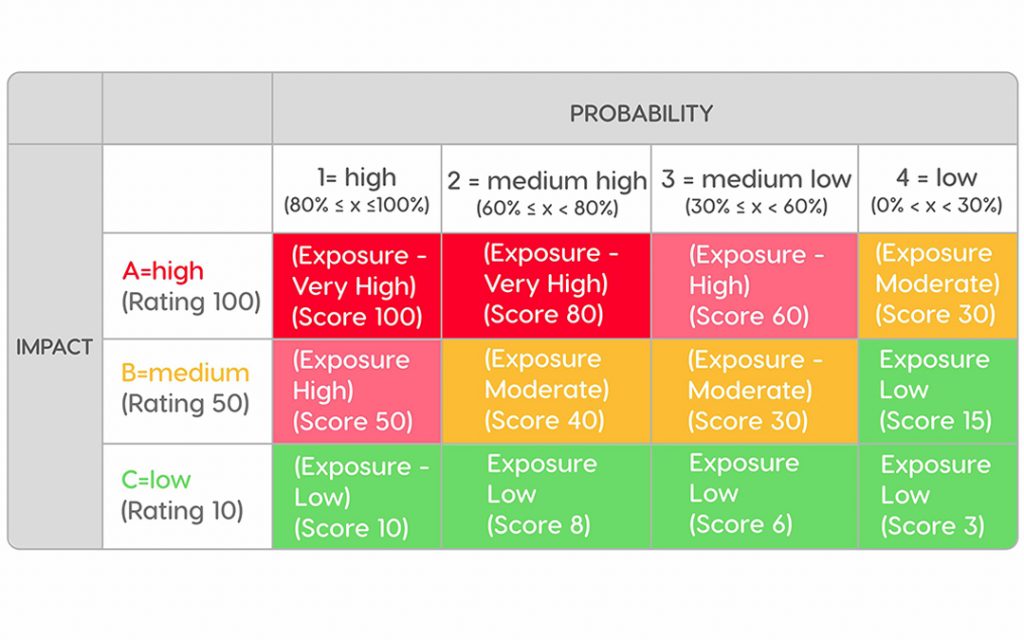The aerospace engineering sector deals with mostly large and complex projects. Accordingly, they are more vulnerable to the consequences of risk-bearing events. When unmanaged, these risks can impact people’s safety and, to make matters worse, come down to considerable financial losses.
So, the importance of risk management cannot be overestimated – it’s better to stay ahead of all possible threats to your project.
What are the most typical risks associated with aerospace engineering projects, and how to manage them effectively? Let’s figure it out in the article.
Main Risks Affecting Aerospace Engineering Projects
There are various classifications of risk types and categories. Speaking about the risk-bearing events affecting aerospace engineering projects, we can divide them into three groups: project management, engineering risks, and those that are typical for the aerospace and defense industry. Let’s take a closer look at each of the groups.
Project management risks
These are the factors that can create roadblocks for the successful management of any project regardless of the industry. They touch upon the following project management areas:
- Planning (e.g., developing a poor project plan),
- Executing (e.g., unfeasible milestones, unavailability of a critical employee),
- Estimating (e.g., unrealistic or inaccurate estimates),
- Communicating (miscommunication between the project participants). [1]
There’s no doubt that these challenges can significantly hamper the workflow.
Engineering risks
- Changes in regulations and standards.
Engineering projects must strictly comply with standards and regulations, so any changes in them will result in rework and a project delay.
- Probability of accidents.
This mostly refers to the manufacturing process, which is also a part of aerospace engineering. For example, welding can be dangerous for workers; assembling an air- or a spacecraft involves moving large-scale parts from one facility to another, working on the top of an air-/spacecraft, which increases chances for accidents and/or employees’ injuries.
- Problems with outsourced parts.
They can be delivered with delays, be defective or ill-fitting. [2]
What should be also added here is that the aerospace engineering companies have been embracing digitalization during recent years. Apart from numerous benefits, this process is accompanied with certain risks, too.
First, there can be a lack of enough digital workforce to staff projects, which is a typical challenge for initiatives that require implementation of digital technologies.
Second, people may require more time to get used to working with innovation technologies and equipment, which may lead to project delays.
Finally, increased digitalization carries cybersecurity risks that can put sensitive data as well as a project’s safety at stake.
Read more: Digitalization of Aerospace Engineering: Main Difficulties and Ways to Overcome Them
Risks specific for the aerospace and defense industry
The research by EY Global outlines the most severe risks for the domain and ranges them according to their impact. Let’s consider the ones that are most influential for aerospace engineering.
- Volatility in the geopolitical and economic environment.
For example, currently, the A&D industry is facing increasing geopolitical and economic uncertainty as a result of the Russia-Ukraine war, energy and raw materials challenges due to the sanctions imposed on Russia, inflation rate, etc.
- Managing the supply chain.
The A&D supply chains are complex and involve many different types of suppliers, which increases the dependence of A&D organizations on them. Issues with the supply chain lead to poor quality of products and delays in their releases.
- Competition at the domestic and international markets.
Large aerospace companies (Boeing, Airbus, Lockheed Martin, and more) hold a significant market share, which poses additional challenges for smaller players in terms of their competitiveness on the market.
- Talent management.
The A&D industry is experiencing certain talent challenges, e.g., a relatively low number of tech-savvy employees, competition for them with technology companies; a significant number of people are reaching the age of retirement, but the younger generation cannot replace them quickly enough.
- Exposure to cyber risks.
As mentioned earlier, these risks are caused by increased connectivity and digitalization.
Risks defined by AS9100 standard
AS9100 is an international standardized quality management system for the aerospace industry, which aims to improve safety and reliability of aerospace products. Risk management is an essential part of the standard which determines three major risks for the aerospace companies:
- Product safety.
It involves two aspects: the safety of the production process and the staff involved in it as well as the safety of the end product and in turn the end user.
- Input acquisition and prevention of counterfeit parts.
Sub-par materials will inevitably affect the quality of the final product making it dangerous for the end users.
- Customer satisfaction.
Building an air-/spacecraft costs millions of dollars, so the end product must meet the customers’ requirements to the full. Otherwise, aerospace manufacturers will face huge losses. [3]
Effective Risk Management in Aerospace Engineering Companies

We’ll consider two sides of risk management in aerospace engineering: managing project risks and operational risk management outlined in the aerospace quality management standard AS9100.
Project risk management
The traditional approach to managing project risks is applicable to aerospace engineering, too. What are the main steps in this process?
Step 1: Planning for risks
As part of a project management plan, a project manager and/or an engineer should develop a risk management plan that includes all necessary information for the project team: the goal and objectives of the risk management process, necessary tools and techniques, documentation, reporting, responsibilities and roles.
Step 2: Identifying risks
To identify possible project risks, it’s reasonable to analyze historical data, consult stakeholders and the project team as well as perform simulations. The classifications of risks mentioned in the previous section will also be useful to determine possible threats.
Step 3: Analyzing risks
Risk analysis involves estimating the probability of risk occurrence and the impact of the defined risks. The estimation implies performing qualitative and quantitative analysis. The results can be represented in the form of a risk matrix which is given below as an example.

Step 4: Developing risk response strategies
There are four possible strategies of responding to risk-bearing events:
- Acceptance: no actions are taken to mitigate a risk;
- Avoidance: trying to eliminate the cause of a risk;
- Mitigation: taking actions to minimize the negative impact of a risk on a project;
- Transfer: sharing a risk with another party.
Step 5: Monitoring and controlling risks
It’s an iterative process that includes the following actions:
- Identification of any new risks and planning for them;
- Review of the existing risks to check if they require reassessment or if other risks have become critical over time, etc.;
- Risk reclassification if necessary;
- Risk reporting (basically, this can be done with the help of a risk register). [4; 5]
Tools that simplify project risk management
As a rule, companies implement project/resource management software for more efficient workflow and resource utilization. These solutions can significantly simplify the risk management process, too. We’ll take the example of Epicflow, an aerospace and defense project management solution, to illustrate how such a tool works for managing project risks.
- It prioritizes tasks across the whole project portfolio and highlights those that must be completed first and foremost to avoid a delay.
- Its AI-driven functionality makes it possible to simulate different impacts of project environment changes on the workflow and in such a way helps identify possible risks, gives insight into their impact (negative consequences or opportunities), gives grounds for deciding on the most efficient risk response strategy.
- Its predictive capabilities allow a project/resource manager to spot future resource bottlenecks (resource shortages and overload), so that they can take timely measures to avoid these risks in the future.
- Its graphs and features give an insight into the state of all projects in the environment, which also facilitates timely identification of risks.
In addition, Epicflow’s approach implies adding a time buffer to projects, which protects them from failure in case any unfavorable events happen.
Finally, it ensures streamlined and efficient work on multiple projects, so that any risks related to the project management process are eliminated.
This was the standard framework for managing all possible project risks. However, it can be not enough given the nature of aerospace engineering projects.
As we’ve mentioned before, developing products in the aerospace sector is guided by the AS9100 quality management system, where risk management is given a particular emphasis. Let’s explore this approach in the subsection below.
Operational risk management
Operational risk is a sum of uncertainties and hazards faced by an organization during its daily business activities. The AS9100 standard explains the need for operational risk management by the complexity of aerospace and defense products and services and the severity of consequences of potential failures. The process aims to achieve the following goals: to get an insight into risk impacts on operational processes as well as to make decisions on operational processes and ways to manage potential undesired effects.
Operational risk management poses the following requirements to aerospace organizations:
- assigning responsibilities for managing risks (team members, teams, or a department);
- defining the risk criteria (likelihood, consequences, risk acceptance);
- identifying, assessing, and communicating risks (possible risk-bearing events should be immediately communicated to corresponding people);
- identifying, implementing, and managing risk mitigation actions where possible;
- accepting remaining risks (some risks cannot be either mitigated or avoided).
Also, the AS9100 standard dwells upon the concept of risk-based thinking. It can be considered as “an extended version” of risk management, as it should be applied throughout the whole organization, not just for projects. Companies should consider what risks they come across at every stage of their operational processes but, as distinct from traditional risk management, without tracking these risks as a project progresses. The standard emphasizes that risks should be regarded both as unfavorable events and opportunities for growth. [6]
What is also important is that risk-based thinking doesn’t exclude project risk management, but makes it possible to implement it on the level of the whole organization and increase its efficiency.
Conclusion
Let’s summarize the main points discussed in the article.
- Aerospace engineering projects are complex and require a more thorough risk management process due to the severity of consequences of potential failures.
- The risks affecting the aerospace engineering projects can be divided into three groups: project management, engineering, and industry-specific risks.
- A comprehensive approach to risk management in aerospace engineering organizations involves the combination of project and operational risks management.
References
- Bell, Megan. Risk Types in Project Management.
- Pittman, Bruce. (2019). Risk Management in Engineering.
- Dawson, Scott. (2019). AS9100 Biggest Risks.
- Roseke, Bernie. (2012) Crash Course in Engineering Risk Management.
- Lavanya, N. & Malarvizhi, T. (2008). Risk analysis and management: a vital key to effective project management.
- Aerospace Standard. (2016). Quality Management Systems – Requirements for Aviation, Space, and Defense Organizations. Rev. D








Thank you, I have a certificate for this issued by the Engineering authority of Northern Ireland, unfortunately someone stole it when I had to provide proof of my prudentials so I forgot what it was, Thank you
We’re glad to be of help!